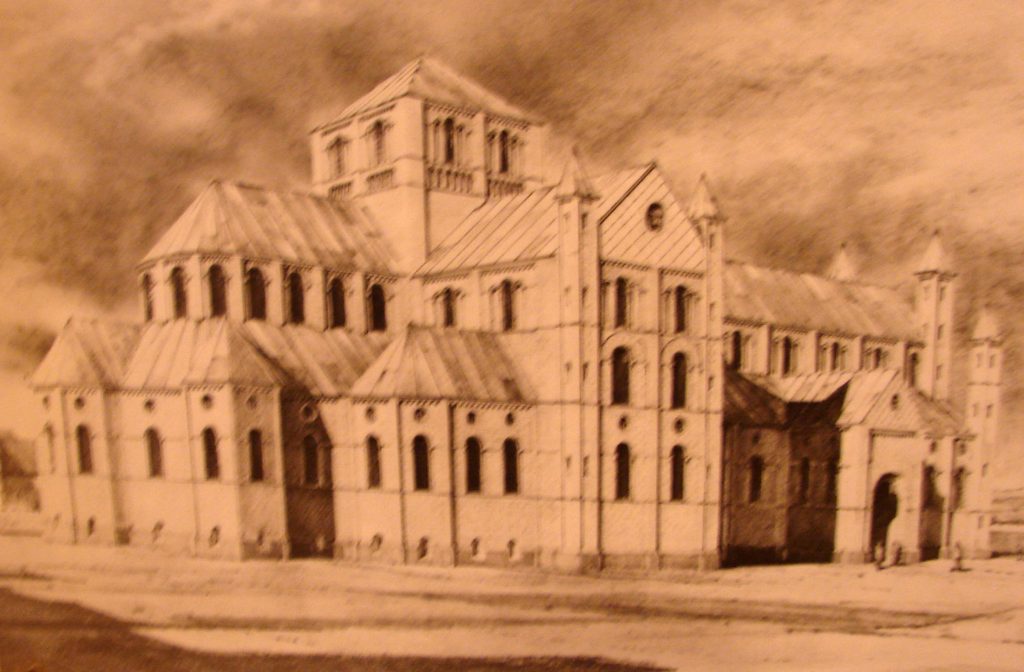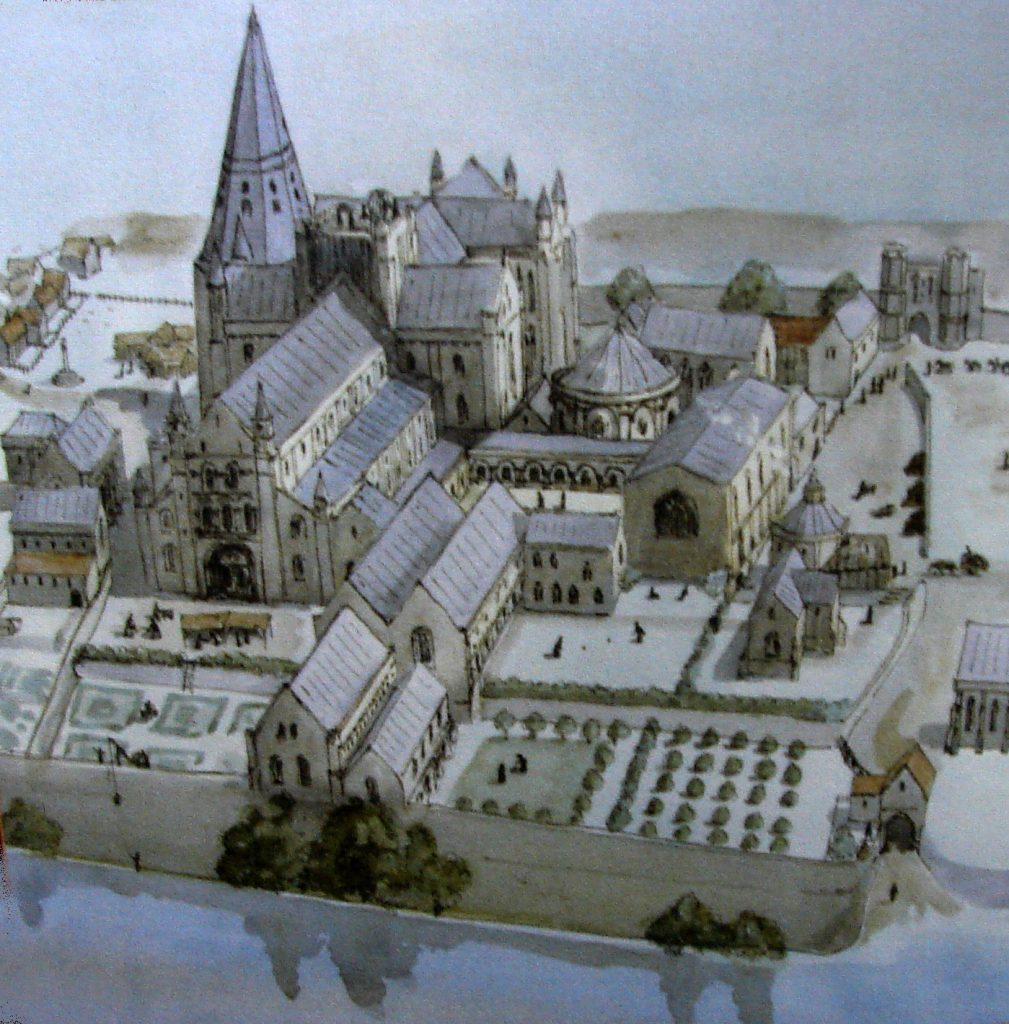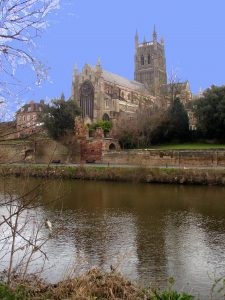 In this blog, I am discussing various topics found in my West Country Medieval Mystery Series, featuring my heroine, the Lady Apollonia of Aust. First, we will focus on the medieval church which had such a meaningful importance in every medieval person’s life that we cannot speak of them without considering its role. Let’s begin with English church buildings, many of which survive into our time.
In this blog, I am discussing various topics found in my West Country Medieval Mystery Series, featuring my heroine, the Lady Apollonia of Aust. First, we will focus on the medieval church which had such a meaningful importance in every medieval person’s life that we cannot speak of them without considering its role. Let’s begin with English church buildings, many of which survive into our time.
I would like to start with medieval cathedrals, beginning with Worchester, shown of the left. The settings of five of my seven books are within the Diocese of Worchester, one of just 15 dioceses in medieval England. King Richard’s Sword is set in Worcester itself.
A church becomes a cathedral only when the seat or throne or “cathedra” of the bishop of the diocese resides in it. Worcester’s cathedral church was in the church of Worcester Priory. Some of the other cathedrals in medieval England were also in monastic churches, and they were called “monastic cathedrals”. Others, such as Exeter Cathedral, which we will consider next month, were not in monastic churches and were called “secular cathedrals”, since they were not run by monks but by priests of the Roman Church called “canons”.
Worcester has been the seat of a bishop since 680 AD and was a monastic cathedral by 983 when St. Oswald built a new church and established a Benedictine priory with it. St. Wulfstan began the present building in 1084 with its architecture ranging from Norman to Perpendicular at the end of the Gothic period. A drawing of Wulfstan’s original Norman church is shown above.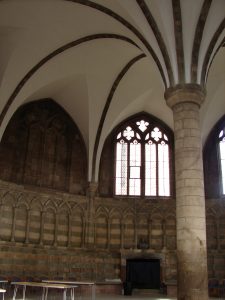
Monasteries have other buildings, besides their church, and these are usually attached to the church by a cloister. A chapter house for the monks to meet and conduct their business is always an important one of them. Worcester’s chapter house is an early circular one, dating to 1180. The interior is pictured on the right, while on the outside, the chapter house is octagonal to give it strength.
The crypt of the present Worcester Cathedral is from St. Wulfstan’s church and is Norman style architecture. The architecture of the “quire” or choir of the cathedral is Early English Gothic. Worcester Cathedral has two transepts crossing the nave, much like Salisbury and Lincoln Cathedrals, probably to facilitate the private saying of the Holy Office by clergy or monks. The nave itself has several styles of architecture in transition from Norman to Gothic. I am shown seated in the nave of the cathedral pictured below as I study these varied styles.
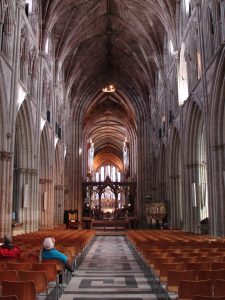 The version of the church at the time of King Richard’s Sword was much as we see it today, but it did feature a free-standing tower 65 meters tall called the Clochium on the north side of the church. The Clochium was a massive, octagonal stone structure with a lead spire on top built circa 1220, probably used to toll the hours of the Opus Dei before the central bell tower of the Gothic structure was built. The drawing of the medieval cathedral and priory below shows how the Clochium was higher than any other feature of the medieval buildings. Early in my novel, when Lady Apollonia visited the priory, she had to walk past the Clochium to enter the cathedral through the north door.
The version of the church at the time of King Richard’s Sword was much as we see it today, but it did feature a free-standing tower 65 meters tall called the Clochium on the north side of the church. The Clochium was a massive, octagonal stone structure with a lead spire on top built circa 1220, probably used to toll the hours of the Opus Dei before the central bell tower of the Gothic structure was built. The drawing of the medieval cathedral and priory below shows how the Clochium was higher than any other feature of the medieval buildings. Early in my novel, when Lady Apollonia visited the priory, she had to walk past the Clochium to enter the cathedral through the north door.
Please join us next time when I discuss Exeter Cathedral as an example of a secular medieval cathedral.
